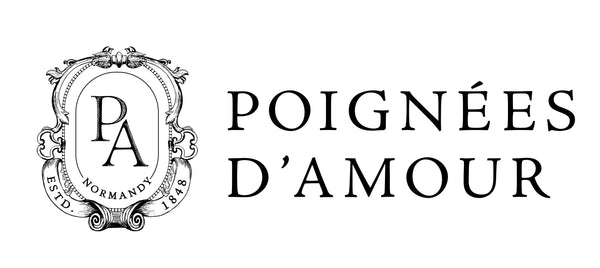
French Interiors: A Timeless Elegance
French interiors are the epitome of timeless elegance and sophistication. Known for their exquisite balance of luxury, comfort, and understated opulence, French interiors seamlessly blend historical charm with modern functionality. From the grandiose palaces of the Louis Era to the minimalist beauty of modernism, French interior design has continually evolved, yet remains rooted in a rich heritage of craftsmanship and artistry.
Historical Context and Evolution
The Opulence of the Louis Era
The French interior design journey begins with the Louis Era, encompassing the reigns of Louis XIV, XV, and XVI. Each period brought unique contributions to the art of interior decoration. Louis XIV's reign, also known as the Sun King era, was marked by an unparalleled display of opulence and grandeur. The Palace of Versailles stands as a testament to this era, with its intricate marquetry, lavish tapestries, and grand chandeliers, all epitomizing the Baroque style's emphasis on symmetry and ornate detail.
During the Regency period, a shift towards comfort and elegance emerged. Furniture became lighter, more functional, and accessible, featuring exotic woods and refined aesthetics. This period balanced luxury with practicality, setting the stage for the rococo flair of Louis XV. The Louis XV era is renowned for its playful, asymmetrical designs and intricate ornamentation, incorporating exotic themes and materials that added a whimsical yet sophisticated touch to interiors.
The Louis XVI period saw a return to classical simplicity and elegance, inspired by classical antiquity. This era favored straight lines, symmetrical designs, and sober decorations, moving away from the elaborate curves of the previous period. The furniture and decor of this time reflected a harmonious blend of beauty and function, creating an enduring style that continues to influence contemporary design.
The Art Nouveau Movement
As the 19th century gave way to the 20th, French interior design embraced the Art Nouveau movement. This period was characterized by organic forms, flowing lines, and intricate detailing inspired by natural elements. Hector Guimard, a prominent figure in Art Nouveau, left an indelible mark with his architectural and interior designs. His use of vegetal and floral motifs, abstracted into flowing, asymmetrical forms, brought a new level of artistry and sophistication to French interiors.
The Rise of Modernism
Modernism, spanning from 1925 to 1965, marked a significant departure from the ornate styles of previous eras. This movement emphasized minimalist aesthetics, functional forms, and the innovative use of industrial materials. Influential architects like Le Corbusier, Jean Prouvé, and Robert Mallet-Stevens played key roles in this transformation, favoring clean lines, geometric shapes, and a utilitarian approach. Their designs revolutionized French interiors, blending historical motifs with contemporary sensibilities to create spaces that are both functional and aesthetically pleasing.
Key Characteristics of French Interiors
French interiors are defined by several key characteristics that set them apart:
- Elegance and Sophistication: French interiors exude a refined elegance, achieved through a careful balance of luxurious materials, ornate details, and harmonious color palettes.
- Historical Charm: The integration of historical elements, such as antique furniture and classical motifs, creates a sense of timelessness and continuity.
- Comfort and Functionality: Despite their opulence, French interiors prioritize comfort and functionality, ensuring that each space is as practical as it is beautiful.
- Attention to Detail: From intricate carvings on furniture to the selection of fine fabrics and finishes, French interiors are characterized by meticulous attention to detail.
- Symmetry and Balance: A hallmark of French design is its emphasis on symmetry and balance, creating visually pleasing and harmonious spaces.
Bringing French Elegance to Modern Homes
In contemporary interior design, the influence of French interiors remains strong. Modern homes often incorporate elements of French elegance, blending them with current trends to create unique and sophisticated spaces. Here are some ways to bring French charm into modern interiors:
- Incorporate Antique Pieces: Integrating antique furniture or decor items can add a touch of historical charm and authenticity to a modern space.
- Use Luxurious Fabrics: Fabrics such as silk, velvet, and brocade can enhance the elegance of any room. Consider using these materials for upholstery, drapery, or accent pieces.
- Emphasize Symmetry: Arrange furniture and decor in a balanced and symmetrical manner to achieve a harmonious and visually pleasing layout.
- Opt for Neutral Color Palettes: Neutral tones, complemented by subtle accents of color, create a serene and sophisticated atmosphere. Shades of white, beige, and gray are commonly used in French interiors.
- Focus on Details: Pay attention to small details, such as decorative moldings, hardware, and accessories, to elevate the overall design.
Conclusion
French interiors represent the pinnacle of design elegance and artistry. From the grandeur of the Louis Era to the minimalist beauty of modernism, French interior design has continuously evolved while maintaining its commitment to luxury, comfort, and impeccable craftsmanship. By incorporating elements of French design into modern homes, it is possible to create spaces that are not only beautiful but also timeless and sophisticated, echoing the rich heritage and artistic excellence of French interiors.

